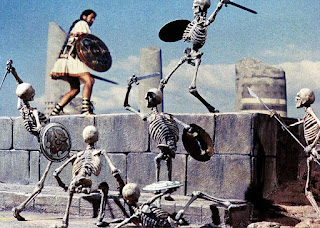Celebrating
my 60th birthday today up here in the northern Lake District might
well seem more Wordsworthian than Morrisian; but two Morris-related thoughts do
none the less pop up. First, that I am
now only two years away from the age at which Morris himself died. Not that I intend, across the next
twenty-four months, to accompany him on that sad final journey, but I certainly
do feel more acutely than ever how premature his death was, even by Victorian
middle-class standards, let alone ours. Did the Morris
family make special efforts for his sixtieth birthday, I wonder (no mention of
it in Nick Salmon’s Chronology,
though)? How aware could they have been
at that point that there would not be a seventieth?
Second, it
was only a few years ago, surprisingly – I don’t know why I’d never happened
upon the fact before – that I realised that I shared a birthday with the author
of Wuthering Heights. What Morris himself shares with Emily Brontë
is a profound investment in the Gothic, but this is a term which has very different
meanings, or rather belongs to very different traditions, across their two
oeuvres. I never have really understood
the relation between the architectural and political Gothic of Ruskin and
Morris, centred on the medieval cathedral, and the female or feminist tradition
of Gothic fiction from Anne Radcliffe through the Brontë sisters to Angela
Carter and beyond, whose archetypal narrative situation is: inexperienced,
middle-class virgin sexually threatened by powerful older male in a rambling
country mansion.
Perhaps
there is some strong literary-critical study out there that would make sense of
all this. Are they just two
parallel cultural traditions that don’t after all have very much to do with
each other? Or might they inter-breed in
curious ways? Does a Ruskinian-Morrisian
Gothic text always also release, whether it intends to or not, aspects of the
female or feminist Gothic within itself?
That, at least, would explain why Morris’s News from Nowhere, architecturally dominated by a new socialist
Gothic as it is, also generates the enigmatic, energetic and decidedly
disturbing figure of Ellen in the closing chapters. Could the opposite also be true? Might feminist Gothic novels also emit lateral
Ruskinian-Morrisian messages that they may or may not be conscious of?
Ah well, I’m
not spending my entire 60th birthday on such abstruse literary and
political matters. Time to go and enjoy the Lake District instead!







